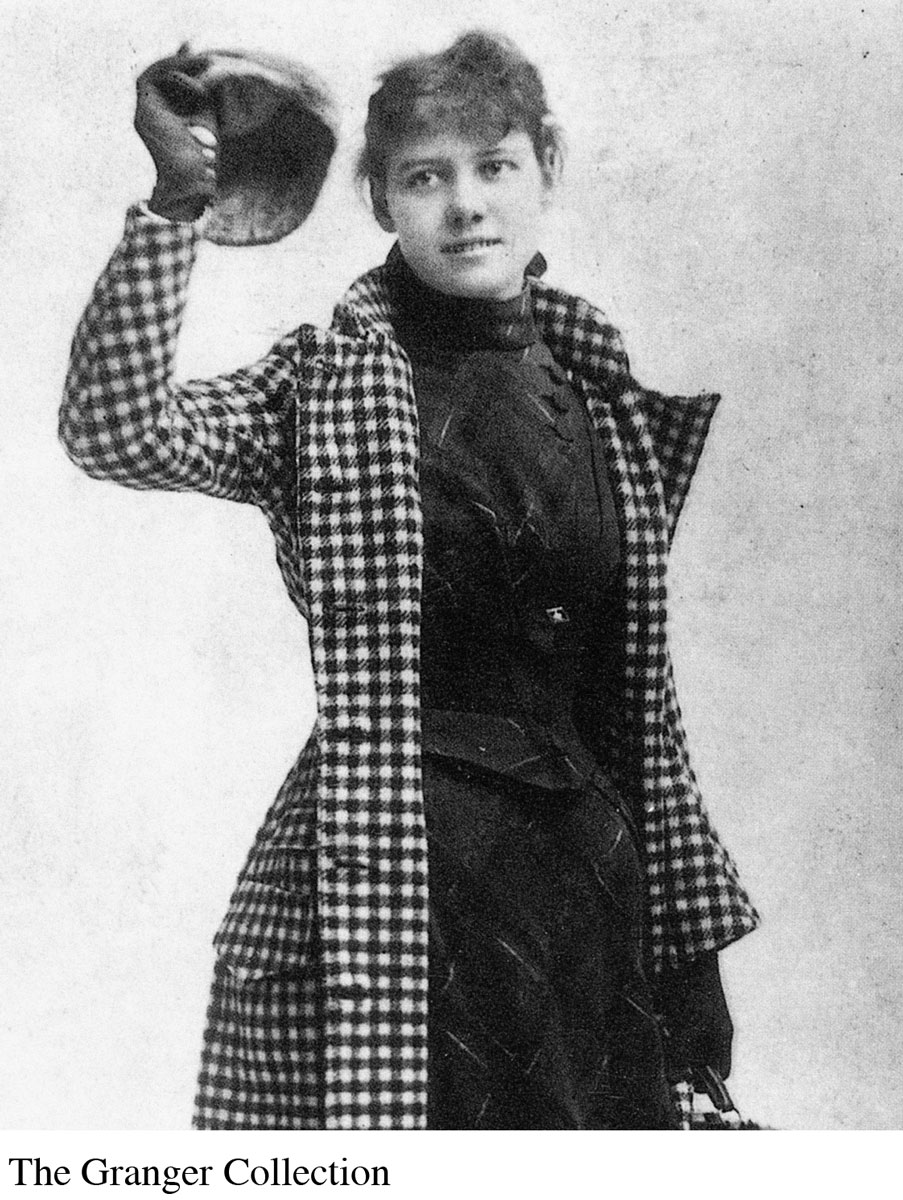Chapter Introduction
3
Newspapers to Digital Frontiers:
Journalism’s Journey

In 1887, a young reporter left her job at the Pittsburgh Dispatch to seek her fortune in New York City. Only twenty-three years old, Elizabeth “Pink” Cochrane had grown tired of writing for the society pages and answering letters to the editor; she wanted to be on the front page. At that time, it was considered “unladylike” for women journalists to use their real names, so the Dispatch editors, borrowing from a Stephen Foster song, had dubbed her “Nellie Bly.”
After four months of persistent job hunting and freelance writing, Nellie Bly earned a tryout at Joseph Pulitzer’s New York World, the nation’s largest paper. Her assignment: to investigate conditions at the Women’s Lunatic Asylum on Blackwell’s Island. Her method: to get herself committed to the asylum. After practicing the look of a disheveled lunatic in front of mirrors, she wandered city streets unwashed and seemingly dazed, and acted strangely around her fellow boarders in a New York rooming house.1 Her tactics worked: Doctors declared her mentally deranged and had her committed.
Ten days later, an attorney from the World went in to get her out. Her two-part story appeared in October 1887 and caused a sensation. Nellie Bly’s dramatic first-person account documented harsh, cold baths; attendants who abused and taunted patients; and newly arrived immigrant women, completely sane, who had been dragged to the asylum simply because no one could understand them. Bly became famous. Pulitzer gave her a permanent job, and New York City committed $1 million toward improving its asylums. Through her courageous work, Bly pioneered what was then called detective or stunt journalism—a model that would pave the way toward the twentieth-century practice of investigative journalism.
JOURNALISM IS THE ONLY MEDIA ENTERPRISE THAT democracy absolutely requires—and is the only media practice and business specifically protected by the U.S. Constitution. However, with the decline in traditional news audiences, mounting criticism of “celebrity” journalists, the growth of partisanship in politics, and the rise of highly opinionated twenty-four-hour cable news and Internet news blogs, mainstream journalists have begun losing their credibility with the public. To understand where journalism and all of its current print and electronic forms are today, it’s useful to explore the often partisan and sensationalistic history of newspapers. In this chapter, we look at how the profession of journalism, the technology of gathering and sharing the news, and the economics of the news business shaped each other over the last three hundred years by:
exploring journalism’s early history, including the rise of the political-commercial press, penny papers, and yellow journalism
assessing the modern era of print journalism, including the tensions between objective and interpretive journalism
considering how the transition from tradecraft to profession in the twentieth century created values, ethics, practices, and cultures recognizable in most newsrooms
looking at journalism in the Information Age, including changing definitions of “news” and the evolution of journalism’s values
considering the diverse array of newspaper types in existence today, such as local and ethnic papers as well as the underground press
examining the economics behind print journalism
taking stock of the challenges facing journalism today, such as industry consolidation and the digitization of content
considering how journalism’s current struggles may affect the strength of our democracy
